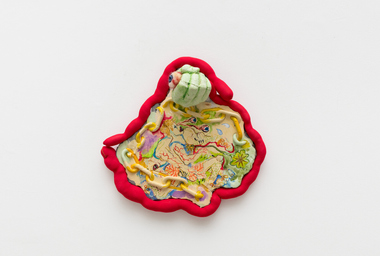
A Sua Estupidez
Jul 9 – Aug 20, 2022
Opening
Jul 9, 3 pm–6 pm
Carpintaria
Rua Jardim Botânico 971,
Rio de Janeiro
Directions
Download
Barrão | Lenora de Barros | Cabelo | Tiago Carneiro da Cunha | Rodrigo Cass | Iran do Espírito Santo | Márcia Falcão | Ivens Machado | Rivane Neuenschwander | Mauro Restiffe | Gokula Stoffel | Erika Verzutti | Bárbara Wagner & Benjamin de Burca | Yuli Yamagata
Appropriating the expression “reserve value” – the financial market jargon often used to define the investment of buying a work of art – the present exhibition applies a more subjective interpretation. The work of art is, indeed, a reserve value. It is an object into which the artist has placed a huge load of values; it is an integral thing that contains and preserves values that are dear to the artist, values which are frequently under threat in the outside world. Art is the experience of values incarnated in objects, values that are activated in our relationship with the work.
The 26 works that constitute this group show trigger value experiences and principles that are diverse but not divergent. Even though they have been produced at different times and places, when exhibited together, all the works converge on the current socio-political landscape. A set is formed through the occupation of this landscape with power and physicality, resonating a common value: the value of protest. With just over two months before the Brazilian presidential election that might come to alleviate our national plight, this protest – in the shape of an art exhibition – is pushing us towards a sense of urgency. A Sua Estupidez [Your Stupidity] becomes a direct collective message to the “unnamable” that currently governs us. A Sua Estupidez [Your Stupidity] is the expression of our accusation, the incarnation of our revolt, the manifestation of the freedom to deny what we despise, the representation of what does not represent us.
The exhibition unfolds like a trajectory of possible epiphanies. It is down to the visitor to claim their triggering elements, to absorb them, and to translate them into sensations and thoughts. From the start, we have the transposition of the stars found on the colorful Brazilian flag to black silk in the work of Iran do Espírito Santo. Across from it, Bárbara Wagner & Benjamin de Burca’s video Terremoto Santo [Holy Tremor], which is also currently being exhibited at the New Museum in New York, depicts a community of Gospel-singing evangelical worshippers in the Brasilis territory. Next to it, we have Ivens Machado’s photo-performances, the artist’s body tied with gauze, embodying the tension and pressure at the core of the military dictatorship. His sculpture made of glass shards on concrete weighs down our gaze, as heavy as Espírito Santos’ image-sculpture in the form of a black granite reflective window. In the paintings of Gokula Stoffel and Cabelo, beings outlined in red seem pressured by thick and intense brushstrokes that give volume to the compositional landscape. In the paintings of Gokula Stoffel and Cabelo, beings outlined in red seem pressured by thick and intense brushstrokes that give volume to the compositional landscape. The figure of Exu in the form of a sculpture serves as support for Luz com Trevas, a video clip by Cabelo that appropriates excerpts from Brazilian cinema — such as O Bandido da Luz Vermelha, by Rogério Sganzerla — to call on people to unite for freedom and rights.
Erika Verzutti’s relief comes into being both as form and title: Devil! Also nominal and direct, Rivane Neuenschwander’s Hydra Pantanal reinterprets a Dantean hell in the capitalist era. Mauro Restiffe’s photographs show the contrast between presidential inaugurations in Brasília, the capital of the current violations. Tiago Carneiro da Cunha, through painting and sculpture, presents us with archetypal characters of perdition, simultaneously scared and scary. Rodrigo Cass’ sculpture and video deal with instability and rupture: white weapons that break fragile bodies. Márcia Falcão makes us face up to the pain of the violated female body; blood is the matter of paint. Lenora de Barros protests against silence with noisy, violent strokes. Violence is also invoked in Yuli Yamagata’s pictorial reliefs from where bulging eyes and stiff hands emerge, like in a horror B movie. And finally, resembling a radio message for the near future, Barrão’s sculpture waves like a white flag, a love gesture, an appeal.
Because, after all, things have to change.
Because, as the music goes, your stupidity is not normal!

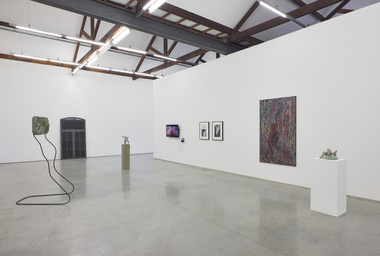
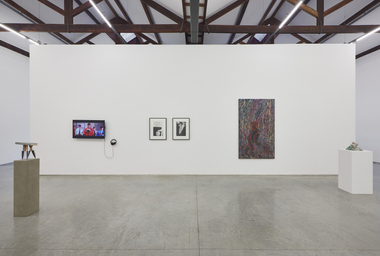
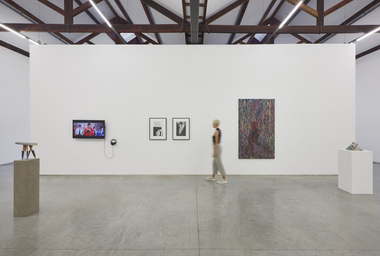
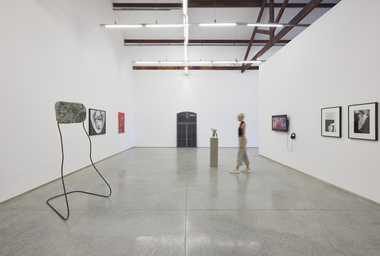
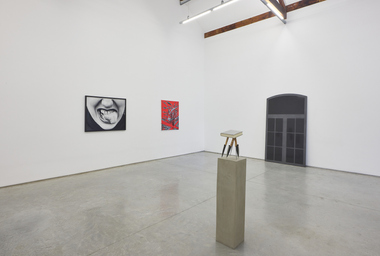
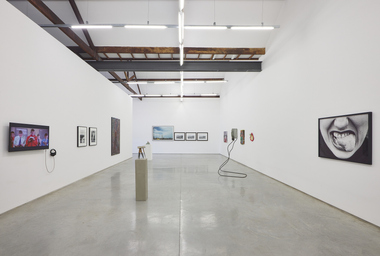
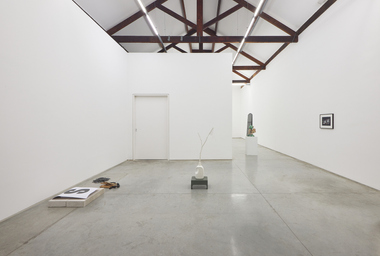
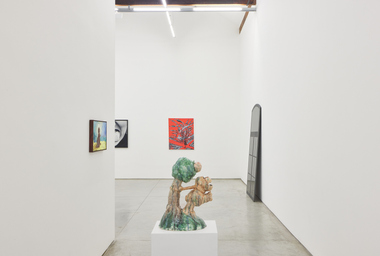
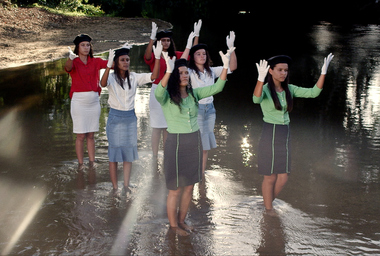
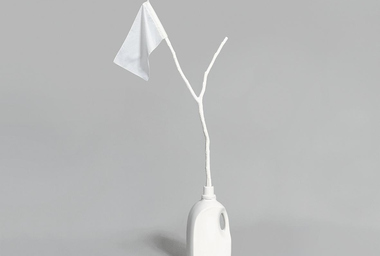
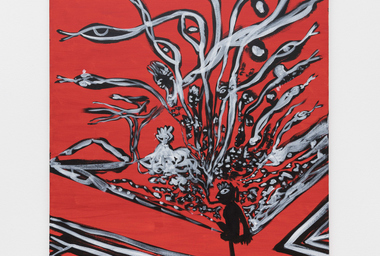
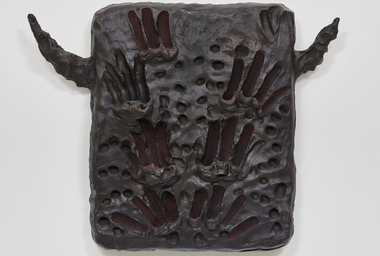
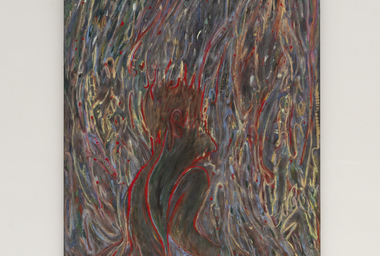

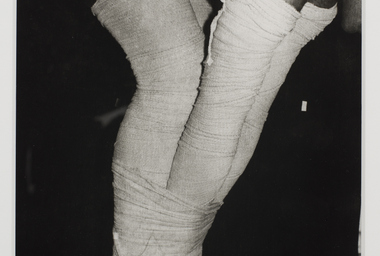



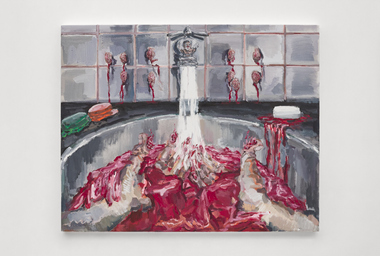
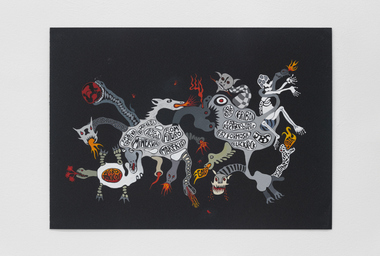
![RODRIGO CASS Anatomia da Revolução [Vertical Integration], 2017](https://fdag.com.br/app/uploads/2022/07/rodrigo-cass-anatomia-da-revolucao-vertical-integration-2017-380x256.jpg)

